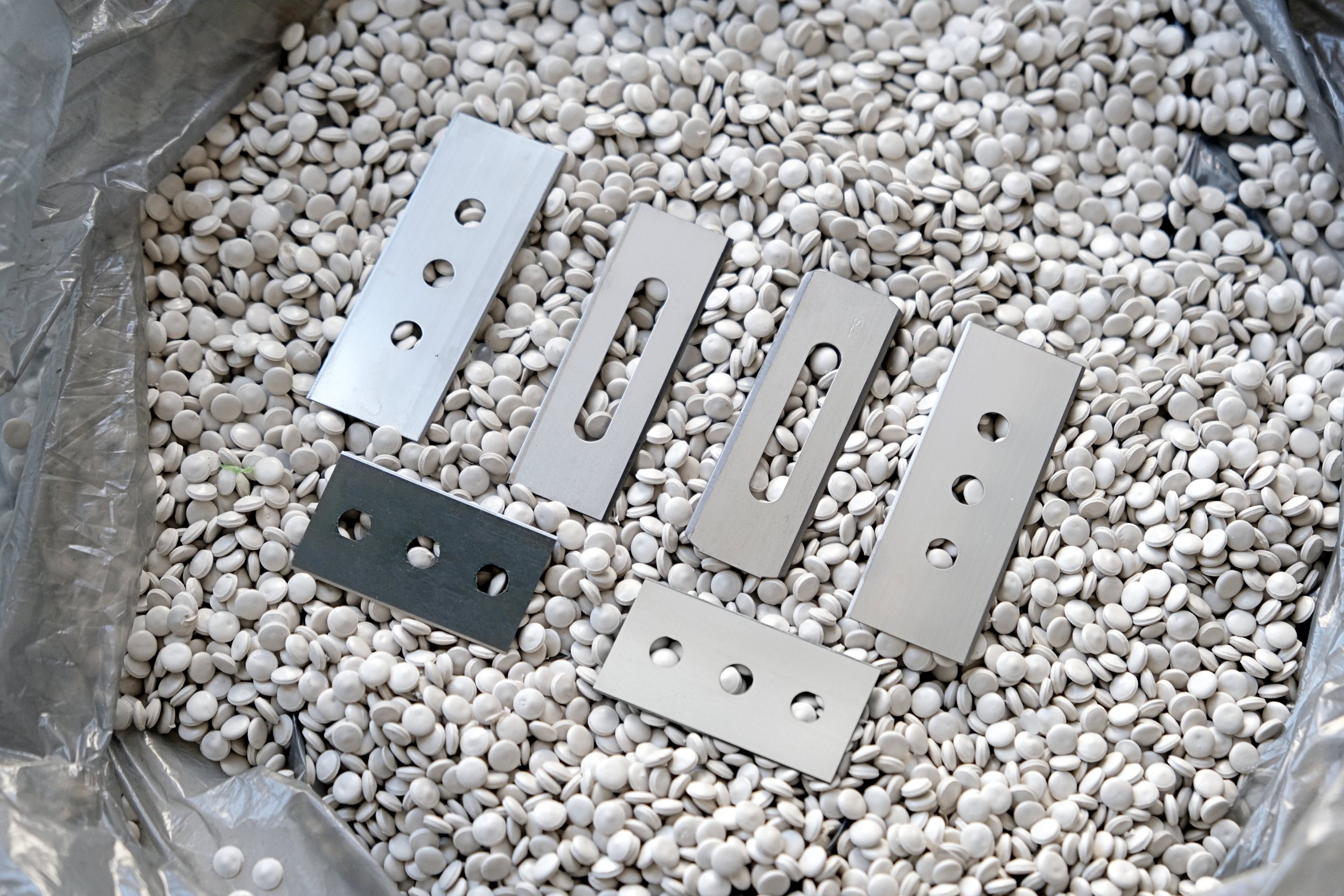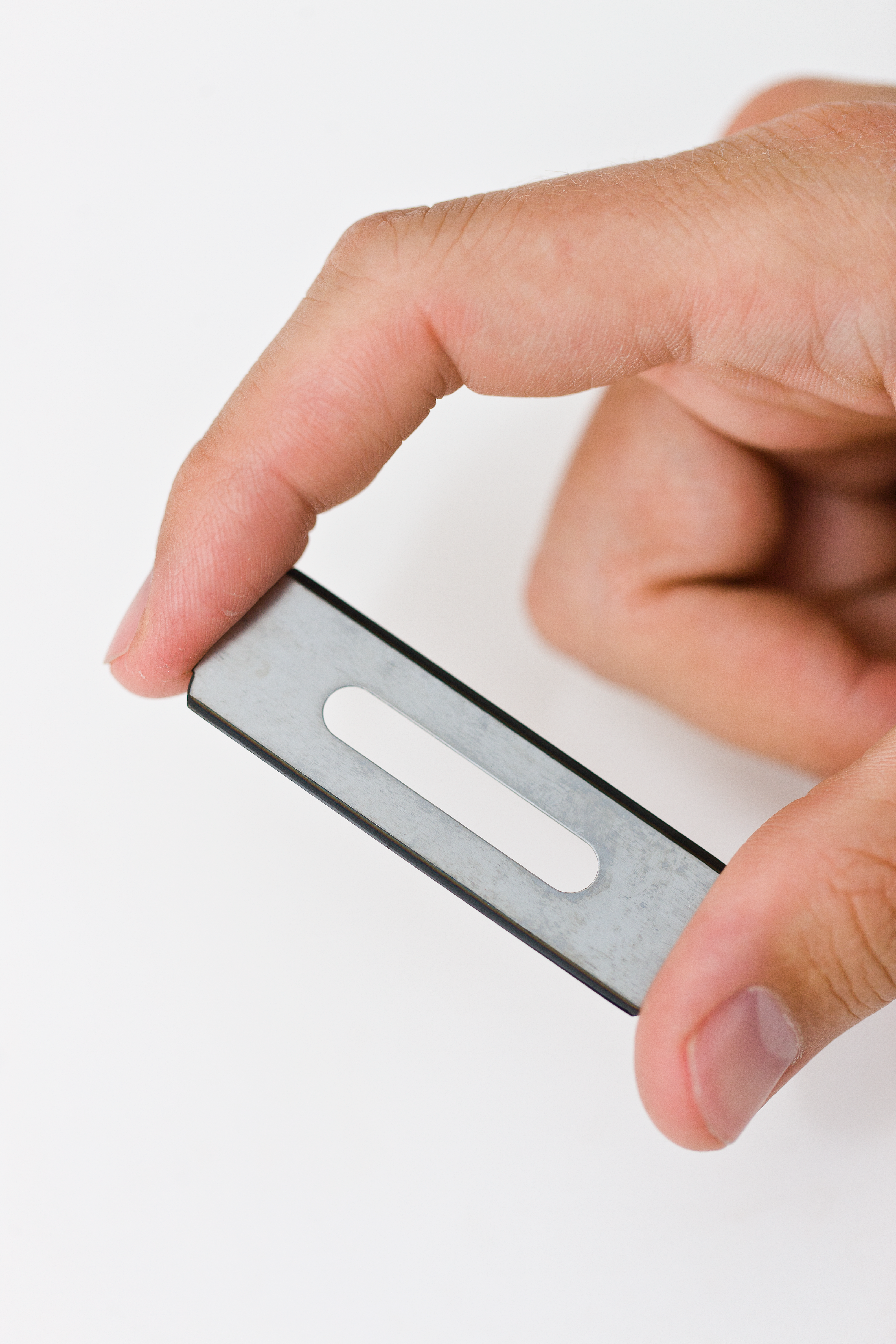CHOOSE THE RIGHT BLADE

When choosing an industrial blade, there are 3 main factors to consider: the design, the material, and the coating of the blade.
Thickness Performance
Thinner blades work better. Therefore, you should try to use the thinnest blade possible. A thinner blade requires less force. A thinner blade is useful to prevent belt breaks and gives a better cut.
Material Performance
Optimized materials increase the service life of industrial blades. Aufer Solutions has slitting knives made of different materials depending on the cutting process, which guarantee wear resistance and optimal cutting performance. Industrial cutting blades are available in the following materials:
● Carbon Steel
● Stainless steel
● Tool steel
● HSS-M2 Steel
● D2 Steel
● Tungsten Carbide
● Solid ceramic
They are available in a wide range of thicknesses and designs. There are blades with rounded and square corners, with slotted or triple holes, to suit specific cutting applications.
Coating Performance
Coating the blade and cutting edges prolongs blade life and cutting results. As a bonus, coatings can improve surface finish and reduce friction, which reduces heat and wear.
Aufer Solutions coated industrial knives have “T”, “K”, “Z”, “X”, “C”, “V” at the end of the product code, e.g. 5K or 2-020-Z.
T
Titanium. Titanium (TiN) coated blades for optimal cutting performance. Gold-colored edge. Low friction that gives less dust. Competitive durability and performance. FDA Approved
Plastic film and film with few additives
K
Ceramic. Black coating on the edge with a very fine grain structure that optimally protects the edge when cutting white films with a high percentage of chalk. FDA Approved
White films with additives
Z
Zero friction. Grey coating on the edge. Extremely fine-grained structure provides minimal friction, which is optimal for high-speed cutting. The coating is FDA and CE approved to come into contact with food. Very good durability and performance.
Slim Stretch Film
X
Complete ceramics. Fully ceramic coated blade where the sides of the blade are also coated. The coating is FDA and CE approved to come into contact with food. Provides extreme durability when cutting materials with very tiring additives.
Plastic film with additives, multilayer
C
Solid ceramic. Self-sharpening during use and heat resistance. Very fragile, which sometimes makes it difficult to handle. The blade can be used to cut a soft elastic film that melts easily. The C-blade maintains sharpness and temperature.
Soft Flexible Film (EBA)
V
Solid tungsten carbide. Industrial blade of extreme resistance and durability. Solid tungsten carbide provides robustness and performance. Extreme performance and durability.
Hard laminated films (PE) and plastic packaging
Industrial blades are often used to cut and convert the following types of material:
● Adhesive Film
● Plastic film + CaCO3
● Plastic film
● Coated film
● Aluminized or laminated film
● Laminate
● PCR Plastic
● Aluminum foil
● PVC
● PET, PE, PS, PA
● EBA
● PP, CPP, PC
● LDPE, LLDPE, HDPE
● BOPP, BOPE, BOPET
● Paper
● Textiles
● Many others